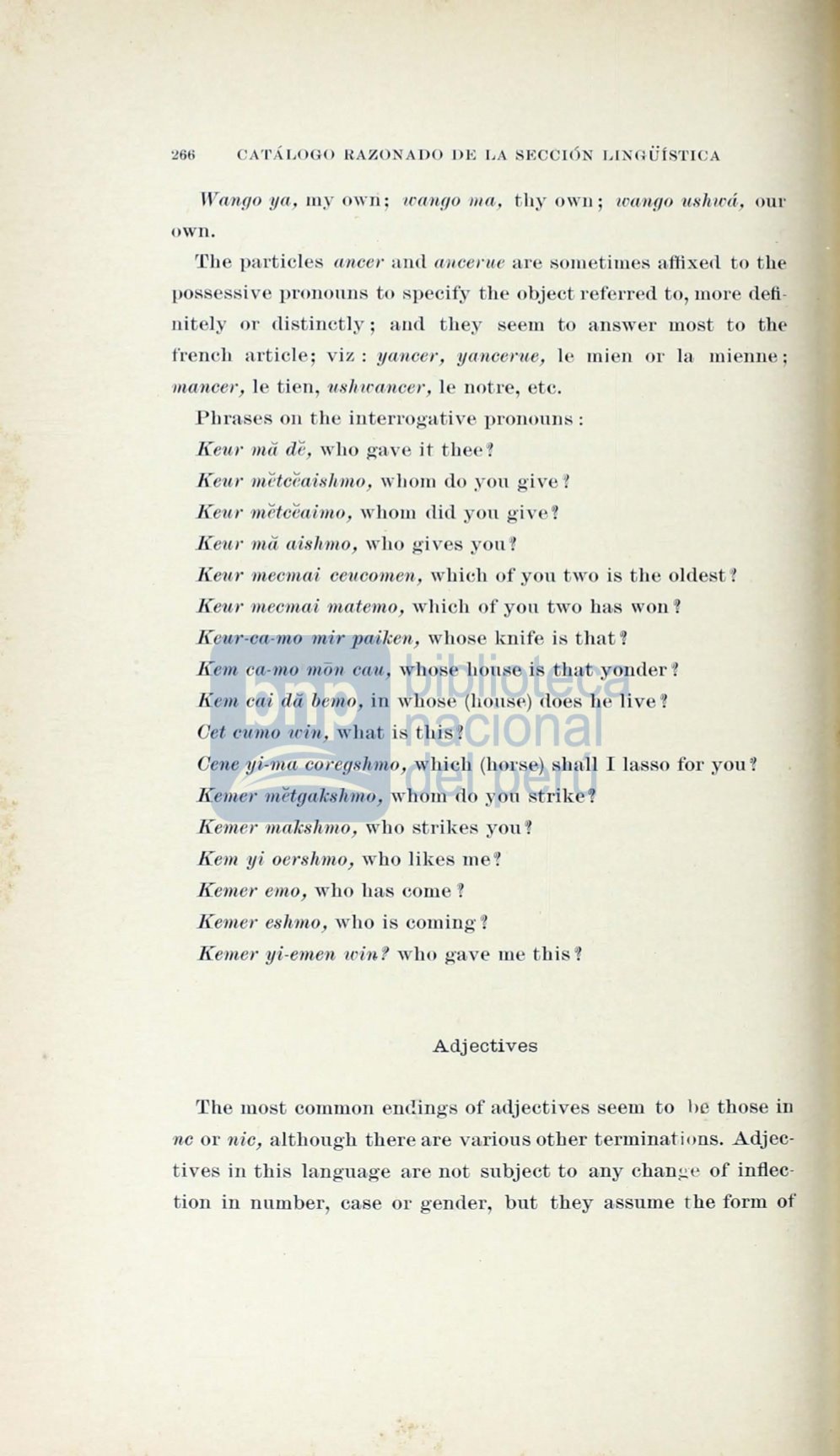

266
CATÁLOGO H.AZONADO DE LA SECCIÓN LINGÜÍSTICA
T1Tango yci,
my own;
wcmgo ma,
tby own;
wcingo iishwá,
our
own.
Tbe particles
ancer
ancl
cmcenw
are sometimes affixecl to the
possessive prononns to specify the object referred to, more defi–
nitely or distinctly; ancl they seem to answer most to tbe
french article; viz :
yancer, ya.nceriie,
le mien or la mienne;
niancer,
le tien,
iishwcincer,
le notre, etc.
Pbrases
011
the interrogative pronouns :
Keur ina de,
who gave it tbee 'I
K eiir inetceaishino,
wl1om do you give 'I
Keiir metceciimo,
whom did you give'I
Keiir ina aishmo,
who gives yon"?
Keiw mecmai ceiwomen,
wbich of you two is the oldest 'I
K eiir mecmai materno,
which of yon two has won 'I
K eur-ca-mo mir pailcen,
whose knife is that "?
K em ca-mo mon cau,
whose house is that yoncler
"?
K em cai da bemo,
in wbose (house) cloes he live
'1
Get cmno win,
wbat is this "?
Gene yi-11ui coregshmo,
which (horse) sball
I
lasso for you
'I
K emer metgalcshmo,
wbom clo you strike'I
Kemer malcshmo,
wbo strikes you 'I
K em yi oershmo,
who likes me'I
Kemer emo,
who has
come ~
Kemer eshnio,
wbo is coming 'I
Kemer yi-emen win?
wbo gave me tbis 'I
Adjectives
Tbe most common encings of acljectives seem to he those
in
ne
or
nic,
although there are various otber terminations. Adjec–
tives in tbis languag·e are not subject to any chang·e of inflec–
tion in nnmber, case or gencler, but they assume the form of
















